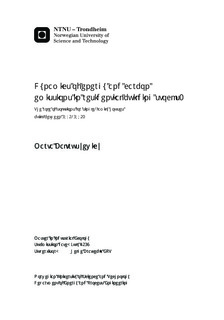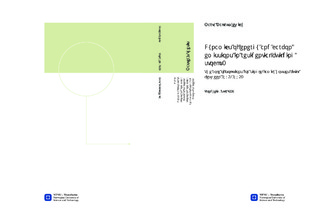| dc.description.abstract | The objective of this study is to assess the environmental impacts of renovating an exemplary single-family house built between 1980 and 1990 to the TEK10 or NS3700 (passive house) standard. The scope of the analysis is split in two steps. First, one exemplary house is analysed and impacts from renovation depending on the refurbishment scenario and different shares of primary energy mix are compared against each other. Subsequently, the analysis of the whole stock of single family houses built between 1980 and 1990 is presented. Dynamic modelling is used for assessment of changes due to demolition, renovation rate and erection of new buildings. The scope of this study includes analysis for two characterizations: cumulative energy demand (CED) and climate change (CC). Both materials used for renovation and energy needed for the operation of the house are investigated. Beyond the scope of this thesis is assessment of the demolition of the house and materials and impacts related to the construction of the exemplary house. The results indicate that retrofitting with the NS3700 scenario gives bigger energy and GHG savings than with the TEK10 scenario. During renovation, the biggest impacts occur due to usage of high-density insulation and production of solar collector system. Overall, the renovation package for NS3700 scenario contributes more to the CC impact than for TEK10 scenario. The total difference between those two scenarios is 2.38E+03 kgCO2-eq (11%). This difference is relatively small when compared to the GHG reduction potential for both scenarios. Results from dynamic modelling shows that cumulated GHG savings during period 2010-2050 with reference to 2010 level were very low for TEK10 scenario. By 2050 the cumulated saving potential was estimated to be 112 ktoneCO2-eq which was 8% of cumulative saving potential for NS3700 scenario achieved by the same time.For NS3700 scenario, the accumulated GHG emissions saving potential would be positive for all of the energy scenarios, assuming that either 7% or 12% of electricity is imported from Nordic or EU mix for Norwegian use. The saving potential would still be positive even when assuming, the worst-case scenario for the EU mix (red scenario). That shows the potential and role of renovating the existing building stock. The level of renovation as well plays a significant role. If the existing single-family houses stock built between 1980 and 1990, would be renovated to the TEK10 standard the cumulated GHG emissions saving potential would be positive for only the ultra-green EU mix scenario, which is the most optimistic. If the shares of imported electricity will increase and the EU mix would be imported, the potential for saving GHG emissions could be highly dependent on the level and quality of deep renovations. That is assuming that other variables such as behavior linked to energy use would not change. | nb_NO |

